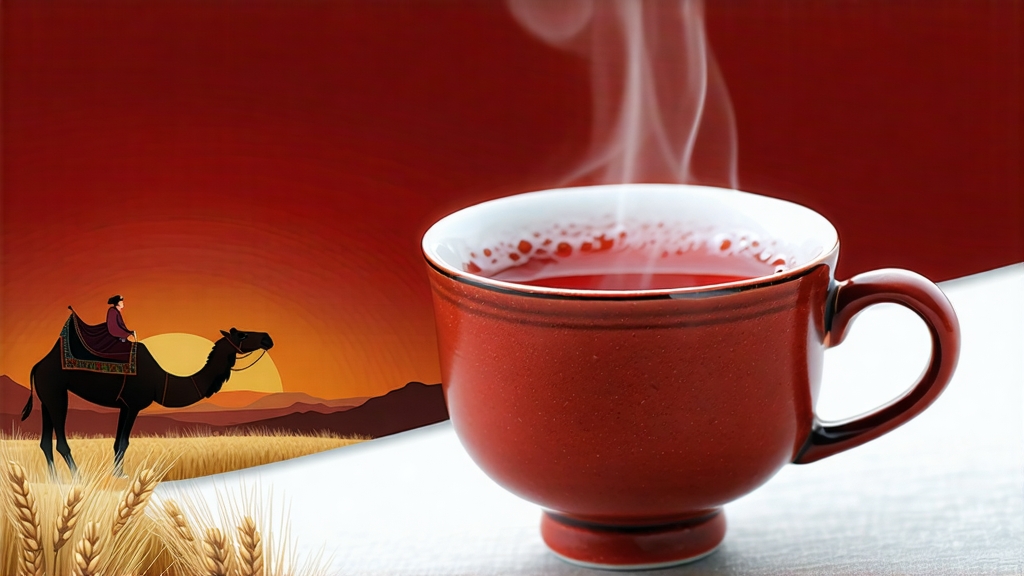
Few beverages can claim to have shaped the geography, economy and even the microbiology of an entire region, yet Fu brick tea—known in Mandarin as Fú zhuān chá—has done exactly that for more than six centuries. Compressed into glossy black bricks whose cross-sections sparkle with tiny yellow “flowers,” this sub-category of dark tea (hēi chá) was once the currency that bought war-horses on the northwestern frontier, the medicine that eased the meat-heavy diets of nomadic tribes, and the microbial masterpiece that taught modern science how a single fungus can turn rough tea leaves into liquid velvet. Today, as global palates hunt for complex, sugar-free umami, Fu brick is stepping out of the camel caravans and into the spotlight of specialty cafés from Brooklyn to Berlin.
-
Historical footprints along the Golden Road
The story begins in the 1360s, when the Ming court moved its tea-for-horse trade from Sichuan to the cooler, drier climate of Shaanxi and Hunan. Caravans carrying coarse summer leaves needed a tea that would neither mold nor crumble on the six-month trek to Kashgar. Local craftsmen discovered that if they steamed the leaves, piled them in humid cellars and compressed them under 30-ton screw presses, the bricks emerged lighter, sweeter and oddly perfumed. By the Qing dynasty, annual production had surpassed 5 000 tons, and imperial edicts fixed the weight of each brick at exactly 2.25 kg so that tax collectors could count them like silver ingots. European travelers first mentioned “bricked tea with golden specks” in 1876, but it was not until the 1950s that Soviet microbiologists identified the golden specks as Eurotium cristatum, a harmless mold now celebrated on packaging as “golden flowers” (jīn huā). -
Terroir and leaf: why Hunan wins
Although small factories in Shaanxi and Zhejiang now produce experimental bricks, only the Yuntai Mountain region in Hunan’s Anhua County enjoys Protected Geographical Indication status. The humid subtropical monsoon, shale-rich red soil and morning fog create ideal conditions for the large-leaf Assamica variety (Camellia sinensis var. assamica cv. Anhua qunti). Farmers pluck “one bud with four leaves” in late July when polyphenols are highest, but caffeine is moderate, ensuring the finished tea will be gentle on empty desert stomachs. -
Crafting a living brick: seven steps from leaf to fungus
Step 1: Pan-firing at 280 °C for eight minutes kills green enzymes yet keeps 45 % moisture, setting the stage for microbial drama.
Step 2: Rolling under 55 rpm for 40 minutes ruptures 80 % of cell walls without shredding the leaf, releasing amino acids that feed future fungi.
Step 3: Piling 1.2 m heaps for ten hours raises internal temperature to 55 °C, triggering auto-oxidation that turns catechins into theaflavins and lends a coppery hue.
Step 4: Stoving over pine charcoal at 75 °C reduces moisture to 18 % and adds a whisper of resinous smoke, a signature contrast to the later floral notes.
Step 5: Golden-flower inoculation: bricks are steamed for 90 seconds, then stacked in 28 °C rooms with 78 % relative humidity. Workers dust brick surfaces with spore-rich “mother powder” collected from previous batches. Within 72 hours, a golden veil blooms; after 15 days the mold reaches 0.5–2 million CFU per gram, the legal minimum for authentic Fu brick.
Step 6: Compression under 400 kg cm⁻² for six minutes produces the standard 35 × 18 × 4 cm brick; the density (0.73 g cm⁻³) is calibrated so oxygen can still migrate inward, allowing slow aging.
Step 7: Paper-wrapped bricks cure on pine shelves for 45 days, losing another 3 % moisture while lipids oxidize, rounding off rough edges. -
The biochemistry of golden flowers
Eurotium cristatum is not decorative. It secretes extracellular enzymes that clip large polyphenols into smaller gallic acid derivatives, reducing astringency by 38 %. Simultaneously, it synthesizes sphingolipids that lend a cooling, mint-like finish. Researchers at Hunan Agricultural University found that 30-day